france

 During World War II, Hitler was terrorizing people, especially the Jews, Gypsies, and even Blacks. Hitler wanted to create an Aryan race dominate society, and truly preferred that anyone who did not fit that “mold” be removed from the Earth. The Aryan race consisted of tall, blonde-haired blue-eyed people, which is odd, considering the fact that Hitler was short (5’9″), and had brown hair. He did have blue eyes, but that was about the only part of him that fit the “mold” of the Aryan race. Nevertheless, he terrorized many people and for that reason, many people tried to escape the occupied areas of Europe, like France to the free areas like Spain.
During World War II, Hitler was terrorizing people, especially the Jews, Gypsies, and even Blacks. Hitler wanted to create an Aryan race dominate society, and truly preferred that anyone who did not fit that “mold” be removed from the Earth. The Aryan race consisted of tall, blonde-haired blue-eyed people, which is odd, considering the fact that Hitler was short (5’9″), and had brown hair. He did have blue eyes, but that was about the only part of him that fit the “mold” of the Aryan race. Nevertheless, he terrorized many people and for that reason, many people tried to escape the occupied areas of Europe, like France to the free areas like Spain.
One of the routes was to go across the ridge of the Pyrenees Mountain range, in order to cross the border into 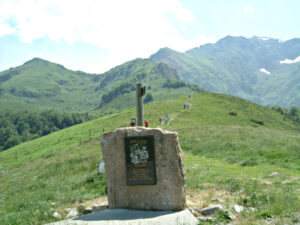 the “promised land,” the neutral territory of Spain, to find a way of escape, a second chance, a future. It was a perilous route to go through the Pyrenees mountains, but it provided a means for hundreds of thousands of resistance fighters, civilians, Jews, allied soldiers and escaped prisoners of war to evade Nazi pursuers. Failure was not an option, because behind them was Nazi-occupied France, bringing certain imprisonment or death. Many of the travelers had come quite a distance, helped by resistance fighters and citizens who disagreed with all that was going on with the Nazi regime. The perilous journey up through rocky boulder fields and frozen glaciers was the final stretch in a long and dangerous trek across wartime Europe, hiding from German military, Gestapo secret police and SS paramilitary forces.
the “promised land,” the neutral territory of Spain, to find a way of escape, a second chance, a future. It was a perilous route to go through the Pyrenees mountains, but it provided a means for hundreds of thousands of resistance fighters, civilians, Jews, allied soldiers and escaped prisoners of war to evade Nazi pursuers. Failure was not an option, because behind them was Nazi-occupied France, bringing certain imprisonment or death. Many of the travelers had come quite a distance, helped by resistance fighters and citizens who disagreed with all that was going on with the Nazi regime. The perilous journey up through rocky boulder fields and frozen glaciers was the final stretch in a long and dangerous trek across wartime Europe, hiding from German military, Gestapo secret police and SS paramilitary forces.
The Freedom Trail, whose final ascent has a zig-zag path through an ice sheet, is an annual “walking memorial” 
 these days. People, some of them descendants of the original people who walked the trail in a desperate run for their lives, walk to remember those who went before them to freedom, those who could not make the journey and lost their lives, and those who lost their lives on the trail itself. The area really is quite beautiful, but I’m sure it didn’t feel that way to those who were running for their lives.
these days. People, some of them descendants of the original people who walked the trail in a desperate run for their lives, walk to remember those who went before them to freedom, those who could not make the journey and lost their lives, and those who lost their lives on the trail itself. The area really is quite beautiful, but I’m sure it didn’t feel that way to those who were running for their lives.
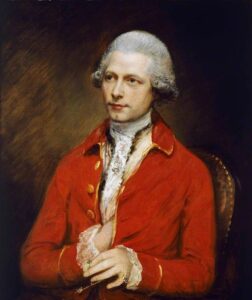
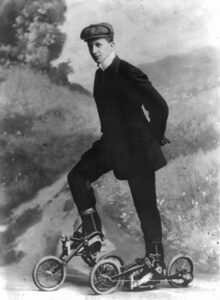 John Joseph Merlin, who was actually born Jean-Joseph Merlin, was a Belgian clockmaker, musical-instrument maker, and inventor. Born on September 6, 1735, in Huy, a town in what was then the Prince-Bishopric of Liège and is now in Belgium, Wallonia. His parents Maximilien Joseph Merlin (a blacksmith) and his wife Marie-Anne Levasseur. Merlin’s parents had married in 1732, and Merlin was the third of six children. Sadly, his mother died when he was eight. His father remarried at least once, to Marie Therese Dechesalle in 1743, and had another child, Charles Merlin. The family moved several times. From ages 19 to 25, Merlin lived in Paris, where he was involved in the Paris Academy of Sciences.
John Joseph Merlin, who was actually born Jean-Joseph Merlin, was a Belgian clockmaker, musical-instrument maker, and inventor. Born on September 6, 1735, in Huy, a town in what was then the Prince-Bishopric of Liège and is now in Belgium, Wallonia. His parents Maximilien Joseph Merlin (a blacksmith) and his wife Marie-Anne Levasseur. Merlin’s parents had married in 1732, and Merlin was the third of six children. Sadly, his mother died when he was eight. His father remarried at least once, to Marie Therese Dechesalle in 1743, and had another child, Charles Merlin. The family moved several times. From ages 19 to 25, Merlin lived in Paris, where he was involved in the Paris Academy of Sciences.
He moved to England in 1760. He began working with a man named James Cox in 1766, creating automatons such as Cox’s timepiece and the Silver Swan. He really took to the work, and by 1773 he was designing and making innovative keyboard instruments. In 1783, Merlin decided to do something new, so he opened Merlin’s Mechanical Museum in Princes Street, Hanover Square, London, which became a meeting-place for the gentry and nobility. At this point, Merlin expanded his horizons, and in addition to his clocks, musical instruments and automata, he invented inline skates…in the 1760s.
Merlin invented inline skates, which he called skaites. Merlin’s skaiteshad two wheels in the 1760s. The skaites were mentioned by Thomas Busby’s Concert Room and Orchestra Anecdotes (1805). The mention was not would have been exactly complimentary either, because it mentions an accident Merlin had while demonstrating his skaites.
“One of his ingenious novelties was a pair of skaites contrived to run on wheels. Supplied with these and a violin, he mixed in the motley group of one of Mrs Cowleys’ masquerades at Carlisle House; when not having provided the means of retarding his velocity, or commanding its direction, he impelled himself against a mirror of more than five hundred pounds value, dashed it to atoms, broke his instrument to pieces and wounded himself most severely.”
In case that all sounded a little confusing, let me simplify. Basically, Merlin didn’t practice using…or rather stopping, his skaites before he demonstrated them. His “stumbling” start aside, Merlin went on to invention other things, including a self-propelled wheelchair, a prosthetic device for “a person born with stumps only,” whist cards for the blind, a pump for expelling “foul air,” a communication system for summoning servants, a 
 pedal-operated revolving tea table, and a mechanical chariot with an early form of odometer. Merlin died in Paddington, London on 8 May 1803. His collection was sold to Thomas Weeks of Great Windmill Street. Weeks died in 1834, at which time Merlin’s creations were auctioned off with Weeks’ other possessions. One of Merlin’s automatons, a dancer with an automated bird, was bought at the auction by Charles Babbage for 35 pounds. He had seen it as a child at Merlin’s Mechanical Museum.
pedal-operated revolving tea table, and a mechanical chariot with an early form of odometer. Merlin died in Paddington, London on 8 May 1803. His collection was sold to Thomas Weeks of Great Windmill Street. Weeks died in 1834, at which time Merlin’s creations were auctioned off with Weeks’ other possessions. One of Merlin’s automatons, a dancer with an automated bird, was bought at the auction by Charles Babbage for 35 pounds. He had seen it as a child at Merlin’s Mechanical Museum.
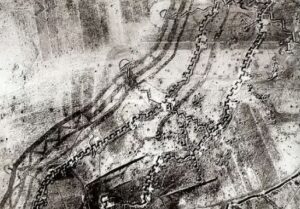
 As World War I…the “War to end all Wars,” was coming to a close, there still remained one serious German stronghold that had to be taken down in order to ensure Allied success in winning the war. That stronghold, known to the Allies as the Hindenburg Line, an area they named after the German commander in chief, Paul von Hindenburg, was built in late 1916. The Germans called it the Siegfried Line. Either was, the Hindenburg Line was a heavily fortified zone running several miles behind the active front between the north coast of France and Verdun, near the border of France and Belgium. This area was a must win, must take back line, if the Allies were going to win the war.
As World War I…the “War to end all Wars,” was coming to a close, there still remained one serious German stronghold that had to be taken down in order to ensure Allied success in winning the war. That stronghold, known to the Allies as the Hindenburg Line, an area they named after the German commander in chief, Paul von Hindenburg, was built in late 1916. The Germans called it the Siegfried Line. Either was, the Hindenburg Line was a heavily fortified zone running several miles behind the active front between the north coast of France and Verdun, near the border of France and Belgium. This area was a must win, must take back line, if the Allies were going to win the war.
The German army was working hard to make it very difficult to break through the Hindenburg line by September 1918. At that time, the German line consisted of six defensive lines. The zone formed by these six lines measured some 6,000 yards deep, and it was ribbed with lengths of barbed wire and dotted with concrete emplacements to be used as firing positions. It was a fortress that the Germans were sure would be impenetrable. However, while the Hindenburg Line was heavily fortified, it was not without weakness. Its southern part was most vulnerable to attack, because it included the Saint Quentin Canal, and the entire area was not totally out of sight of artillery observation by the enemy. Any attack by the Allies would need to come through this weakness. Another weakness was that the whole system was laid out linearly, as opposed to newer constructions that had adapted to more recent developments in firepower and were built with scattered “strong points” laid out like a checkerboard to enhance the intensity of artillery fire. These things would be the saving grace for the Allies, and the downfall for the Germans.
Knowing these vulnerabilities, the Allies began to concentrate all the force built up during their so-called “Hundred Days Offensive,” to their advantage. The operation kicked off on August 8, 1918, and by late September, the Allies had gained a decisive victory at Amiens, France, against the Hindenburg Line. Australian, British, French, and American forces participated in the attack on the Hindenburg Line. The attack began with a huge bombardment, using 1,637 guns along a 10,000-yard-long front. The final 24 hours of the offensive saw the British firing a record 945,052 shells. After capturing the Saint Quentin Canal with a creeping barrage of fire…126 shells for each 500 yards of German trench over an eight-hour period, the Allies successfully breached the Hindenburg Line on September 29, 1918.
The attack was pushed forward by Australian and United States troops, who, out of a must-win sense of urgency, attacked the heavily fortified town of Bellicourt with tanks and aircraft. The battle raged on for four days, with heavy losses on both sides. Finally, the Germans were forced to retreat. With Kaiser Wilhelm II 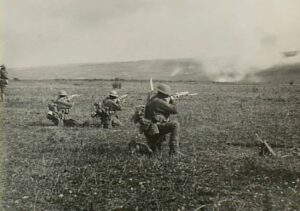
 pressured by the military into accepting governmental reform and Germany’s ally, Bulgaria, suing for an armistice by the end of September, the Central Powers were in disarray on the battlefield, as well as the home front. The Allies continued to press their advantage on the Western Front throughout the month of October, and against their predictions, World War I came to an almost abrupt end on November 11, 1918.
pressured by the military into accepting governmental reform and Germany’s ally, Bulgaria, suing for an armistice by the end of September, the Central Powers were in disarray on the battlefield, as well as the home front. The Allies continued to press their advantage on the Western Front throughout the month of October, and against their predictions, World War I came to an almost abrupt end on November 11, 1918.

 We were watching the Denver Broncos in their huge (19-3) defeat of the Kansas City Chiefs. The game had really just gotten started (it had a 4:00pm start time) when the crash, that took the life of Diana, Princess of Wales, occurred in Paris at 12:23am (4:23pm Mountain Time). The news of the tragedy was aired shortly thereafter, and by 3:00am, Paris time, she was dead. That news was announced at 6:00am Paris time.
We were watching the Denver Broncos in their huge (19-3) defeat of the Kansas City Chiefs. The game had really just gotten started (it had a 4:00pm start time) when the crash, that took the life of Diana, Princess of Wales, occurred in Paris at 12:23am (4:23pm Mountain Time). The news of the tragedy was aired shortly thereafter, and by 3:00am, Paris time, she was dead. That news was announced at 6:00am Paris time.
Diana was a distant cousin of mine…(specifically my 12th cousin 2 times removed), so the news held some significance to my family. There have been many questions concerning the crash that took Diana’s life, and while the powers that be say that they have all been answered, there are many people, including me, who still have questions. I’m sure that we will never have our questions fully answered, and I’m sure that is partly due to the fact that when it comes to Diana, we aren’t sure that the British Crown is telling us everything they know. The mere fact that Prince Charles and Princess Diana were divorced, and at that time, and to many people, his claim to the throne was in question, we naturally doubted the validity of the answers we were given. Nevertheless, no further answers will likely be forthcoming, so we will have to accept the answers we were given…or not accept them, as you please. After the divorce, Princess Diana became known as Diana, Princess of Wales, as a supposed concession by the crown.
Diana, affectionately known as “the People’s Princess,” was 36 years old at the time of her death. Her  boyfriend, the Egyptian-born socialite Dodi Fayed, and the driver of the car, Henri Paul, died as well. The lone survivor of the crash was Diana’s bodyguard Trevor Rees-Jones, who was seriously injured. The car left the Ritz Paris just after midnight, intending to go to Dodi’s apartment on the Rue Arsène Houssaye. As soon as they departed the hotel, a swarm of paparazzi on motorcycles began aggressively tailing their car. About three minutes later, the driver lost control and crashed into a pillar at the entrance of the Pont de l’Alma tunnel. It was later decided that because the driver had alcohol and prescription drugs in his system, the paparazzi held no fault in the matter. That is where I disagree. While the driver had alcohol and prescription drugs in his system, he would not have felt the need to speed through the streets if the paparazzi had left them alone. As a retired insurance agent, I know contributory negligence when I see it. Nevertheless, a “formal investigation” concluded the paparazzi did not cause the collision. Dodi Fayed and Henri Paul, the driver, were pronounced dead at the scene. Diana was taken to the Pitié-Salpêtrière hospital and officially declared dead at 6:00am. Diana’s former husband Prince Charles, as well as her sisters and other members of the Royal Family, arrived in Paris that morning. Diana’s body was then taken back to London.
boyfriend, the Egyptian-born socialite Dodi Fayed, and the driver of the car, Henri Paul, died as well. The lone survivor of the crash was Diana’s bodyguard Trevor Rees-Jones, who was seriously injured. The car left the Ritz Paris just after midnight, intending to go to Dodi’s apartment on the Rue Arsène Houssaye. As soon as they departed the hotel, a swarm of paparazzi on motorcycles began aggressively tailing their car. About three minutes later, the driver lost control and crashed into a pillar at the entrance of the Pont de l’Alma tunnel. It was later decided that because the driver had alcohol and prescription drugs in his system, the paparazzi held no fault in the matter. That is where I disagree. While the driver had alcohol and prescription drugs in his system, he would not have felt the need to speed through the streets if the paparazzi had left them alone. As a retired insurance agent, I know contributory negligence when I see it. Nevertheless, a “formal investigation” concluded the paparazzi did not cause the collision. Dodi Fayed and Henri Paul, the driver, were pronounced dead at the scene. Diana was taken to the Pitié-Salpêtrière hospital and officially declared dead at 6:00am. Diana’s former husband Prince Charles, as well as her sisters and other members of the Royal Family, arrived in Paris that morning. Diana’s body was then taken back to London.
Because Diana was one of the most popular public figures in the world, her death brought a massive outpouring of grief. Mourners began leaving bouquets of flowers at Kensington Palace immediately. The piles of flowers reached about 30 feet from the palace gate. As in her life, her death demanded the attention of the world. She was so loved, and many felt, so mistreated during her marriage. Following her funeral on September 6, 1997, an event that was watched by 2.5 billion people, she was laid to rest on an island at Althorp Estate, which is her childhood home, and is which is where her brother, Earl Charles Spencer lives to this day. The island is off limits, but the estate is open to the public during July and August each year.

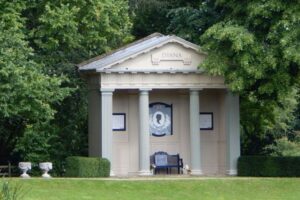 Diana was survived by her two sons, Prince William, who was 15 at the time, and Prince Harry, who was 12. Today she has two daughters-in-law, Duchess Catherine and Duchess Meaghan, as well as five grandchildren, Prince George, Princess Charlotte, Prince Louis; as well as; Archie and Lillibet. Today marks 25 years since the passing of Princess Diana. Gone but not forgotten.
Diana was survived by her two sons, Prince William, who was 15 at the time, and Prince Harry, who was 12. Today she has two daughters-in-law, Duchess Catherine and Duchess Meaghan, as well as five grandchildren, Prince George, Princess Charlotte, Prince Louis; as well as; Archie and Lillibet. Today marks 25 years since the passing of Princess Diana. Gone but not forgotten.
 Captain Leonard Treherne “Max” Schroeder Jr looked out over the choppy water between the landing craft he was on and the shores of their destination…the beaches of Normandy, France. The beaches had been given code names, to protect the mission…Utah, Omaha, Gold, Juno, and Sword; the operation was code named Overlord. The beach ahead of Schroeder had been code named Utah. Along the hills behind the beach were many German bunkers, with armed German snipers hiding inside of them. Schroeder knew they were just waiting for them to step onto the beach before the snipers would open fire.
Captain Leonard Treherne “Max” Schroeder Jr looked out over the choppy water between the landing craft he was on and the shores of their destination…the beaches of Normandy, France. The beaches had been given code names, to protect the mission…Utah, Omaha, Gold, Juno, and Sword; the operation was code named Overlord. The beach ahead of Schroeder had been code named Utah. Along the hills behind the beach were many German bunkers, with armed German snipers hiding inside of them. Schroeder knew they were just waiting for them to step onto the beach before the snipers would open fire.
Schroeder was about to find out firsthand, just how bad this day was going to be. In fact, he was the first American soldier whose feet hit the sand on the beach at Normandy on D-Day…so, while his men were right behind him, he would experience this horrific battle at its inception. I have wondered just how they knew that he was first amid all that chaos, but it is a documented fact. Operation Overlord was pivotal in the United States’ overall success, but it was also extremely bloody, with great loss of life. While every life lost was horrific, the men who stormed the beaches of Normandy that day were willing to give their lives for a 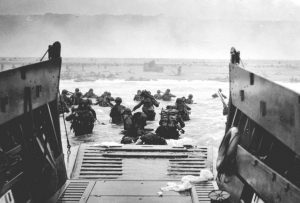 cause that they felt was essential…and I have so much respect for each and every one of them. Captain Schroeder led his team of men onto the beach…along with thousands of others…and managed to get them to their secured location. Nevertheless, during the mission, he was shot twice by German snipers. Once the mission was accomplished and his men were where they needed to be, Captain Schroeder passed out from his injuries.
cause that they felt was essential…and I have so much respect for each and every one of them. Captain Schroeder led his team of men onto the beach…along with thousands of others…and managed to get them to their secured location. Nevertheless, during the mission, he was shot twice by German snipers. Once the mission was accomplished and his men were where they needed to be, Captain Schroeder passed out from his injuries.
Schroeder woke up at an aid station on the beach, with medics taking care of his wounds so he could be transported to an army hospital in England. While in England, he recovered and had a lot of time to read all about his role in the successful mission…in many papers. I don’t know if he realized that his had been such a pivotal role in the battle, but it had. At the time, I doubt if he thought he would ever see that beach again, but in 1994, Schroeder revisited the beach at Normandy as a guest of the French 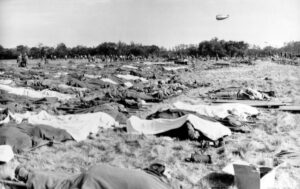 government. It was an amazing ceremony to pay homage to his heroic efforts that helped turn the tide for the Allies in World War II. It was an honor he had given no thought to as he looked out at that beach on that long ago June 6, 1944…but, an honor that he had earned along with all the other men who fought, and the many who had died. I’m sure those who gave all, were thankful that some made it home and managed to live a long life of liberty. Captain Leonard “Max” Schroeder, who was born on July 16, 1918, in Linthicum Heights, Maryland, passed away from emphysema early on the morning of May 26, 2009, in Largo, Florida at the age of 90.
government. It was an amazing ceremony to pay homage to his heroic efforts that helped turn the tide for the Allies in World War II. It was an honor he had given no thought to as he looked out at that beach on that long ago June 6, 1944…but, an honor that he had earned along with all the other men who fought, and the many who had died. I’m sure those who gave all, were thankful that some made it home and managed to live a long life of liberty. Captain Leonard “Max” Schroeder, who was born on July 16, 1918, in Linthicum Heights, Maryland, passed away from emphysema early on the morning of May 26, 2009, in Largo, Florida at the age of 90.
 Whenever a ship sinks, it takes with it a lot of gear, personal effects, and sometimes treasures. These days, they send in the submarines, or rather the mini submarines to salvage whatever they can, find out what caused the sinking, and sometimes to aid in raising the ship to the surface. In times past, when a ship went down, it could easily be lost forever, or at least until more modern times when they could finally find it again.
Whenever a ship sinks, it takes with it a lot of gear, personal effects, and sometimes treasures. These days, they send in the submarines, or rather the mini submarines to salvage whatever they can, find out what caused the sinking, and sometimes to aid in raising the ship to the surface. In times past, when a ship went down, it could easily be lost forever, or at least until more modern times when they could finally find it again.
When the Vasa, an amazingly beautiful Swedish warship that sank on its maiden voyage, 1400 yards into its voyage sat in the harbor for years. The did manage to get the cannon from it right away, but everything else sat underwater until the 1950s, when they had a better way to salvage it. When the world’s first completely covered underwater diving suit was invented around 1715, it consisted of an airtight oak barrel. The suit was used mainly for salvage operations of shipwrecks. I wonder what they could have done with Vasa using that. Vasa wasn’t in dangerously deep water, and could have been accessed easily today, but they just didn’t have the equipment.
The cross between a diving bell and standard diving dress is rather interesting. I wonder if the barrel design John Lethbridge used in 1715 was seriously difficult to move in. It reminds me a of a comical space suit, but I guess it served its purpose. However odd it is, it was the first underwater diving suit, and it is currently located in the Cité de la Mer, a maritime museum in Cherbourg, France.
Lethbridge came up with the idea for his diving suit while working for the East India Company as a salvager. The barrel was airtight, so the diver was protected and safe. The barrel was six feet in length, and the diver had little control of it once it was lowered into the water. The diver had to lay flat on his stomach once the barrel. The barrel had two airtight holes on the sides for the diver’s hands and a hole with glass in the front for use as the diver’s viewing window. During trials, Lethbridge demonstrated that the suit enabled divers to stay 12 fathoms (a unit of length equal to six feet) underwater for at least 30 minutes at a time. That was hard for  me to figure out, until I read that once the diver comes out of the water after 30 minutes, the crew pumped fresh air into the suit through a vent using bellows. At the same time, the used air was let out through another vent. Then, with the fact that the barrel was airtight, the diver was good for another 30 minutes. It wasn’t perfect, but it was much further along than salvage operations had been before it. The suit, while odd and very primitive was an immediate success. It was used mostly to retrieve material from shipwrecks. During Lethbridge’s first salvage…the maiden voyage of the diving suit, as it were, Lethbridge recovered 25 chests of silver and 65 cannons! I would call that a definite success.
me to figure out, until I read that once the diver comes out of the water after 30 minutes, the crew pumped fresh air into the suit through a vent using bellows. At the same time, the used air was let out through another vent. Then, with the fact that the barrel was airtight, the diver was good for another 30 minutes. It wasn’t perfect, but it was much further along than salvage operations had been before it. The suit, while odd and very primitive was an immediate success. It was used mostly to retrieve material from shipwrecks. During Lethbridge’s first salvage…the maiden voyage of the diving suit, as it were, Lethbridge recovered 25 chests of silver and 65 cannons! I would call that a definite success.
 Many people believe that there was no good reason for the war in Vietnam. It seemed like a war we were not going to be allowed to win, and many thought it should have been one we just stayed out of. Vietnam became a French colony in 1877 with the founding of French Indochina, which included Tonkin, Annam, Cochin China and Cambodia…Laos was added in 1893. The French lost control of their colony briefly during World War II, when Japanese troops occupied Vietnam.
Many people believe that there was no good reason for the war in Vietnam. It seemed like a war we were not going to be allowed to win, and many thought it should have been one we just stayed out of. Vietnam became a French colony in 1877 with the founding of French Indochina, which included Tonkin, Annam, Cochin China and Cambodia…Laos was added in 1893. The French lost control of their colony briefly during World War II, when Japanese troops occupied Vietnam.
After the war, Japan and France continued to fight over Vietnam. Ho Chi Minh, a revolutionary leader inspired by Lenin’s Bolshevik Revolution began forming an independence movement. He established the League for the Independence of Vietnam, better known as the Viet Minh, in May of 1941. On September 2, 1945, he declared Vietnam’s independence from France, just hours after Japan’s surrender in World War II. When the French rejected his plan, the Viet Minh resorted to guerilla warfare to fight for an independent Vietnam.
One of the most well-known campaigns of the Vietnam War was codenamed Operation Rolling Thunder. It was an American bombing campaign in which US military aircraft attacked targets throughout North Vietnam from March 1965 to October 1968. This operation was intended to put military pressure on North Vietnam’s communist leaders, thereby reducing their capacity to wage war against the US-supported government of South Vietnam. With that, operation American began its involvement began, not only its assault on North Vietnamese territory, but the expansion of US involvement in the Vietnam War.
By the 1950s, the US military began providing equipment and advisors to help the government of South Vietnam to resist a communist takeover by North Vietnam and its South Vietnam-based allies, the Viet Cong guerrilla fighters. The American military initiated limited air operations within South Vietnam in 1962, in an effort to offer air support to South Vietnamese army forces, destroy suspected Viet Cong bases, and spray herbicides such as Agent Orange to eliminate jungle cover. It was an ugly time for anyone in the area. In August 1964, President Lyndon B Johnson expanded American air operations, when he authorized retaliatory air strikes against North Vietnam following a reported attack on US warships in the Gulf of Tonkin. Later that year, Johnson approved 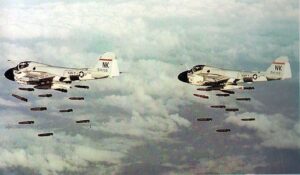 limited bombing raids on the Ho Chi Minh Trail, a network of pathways that connected North Vietnam and South Vietnam by way of neighboring Laos and Cambodia. The president’s goal was to disrupt the flow of manpower and supplies from North Vietnam to its Viet Cong allies. Nothing the United States tried really worked to remove the tensions in the area, and so in 1963, the United States withdrew from Vietnam. Unfortunately, they left behind bombs and land mines from Operation Rolling Thunder and other bombing campaigns of the Vietnam War. By some estimates, those bombs and land mines have killed or injured tens of thousands of Vietnamese people since the United States withdrew its combat troops in 1973.
limited bombing raids on the Ho Chi Minh Trail, a network of pathways that connected North Vietnam and South Vietnam by way of neighboring Laos and Cambodia. The president’s goal was to disrupt the flow of manpower and supplies from North Vietnam to its Viet Cong allies. Nothing the United States tried really worked to remove the tensions in the area, and so in 1963, the United States withdrew from Vietnam. Unfortunately, they left behind bombs and land mines from Operation Rolling Thunder and other bombing campaigns of the Vietnam War. By some estimates, those bombs and land mines have killed or injured tens of thousands of Vietnamese people since the United States withdrew its combat troops in 1973.

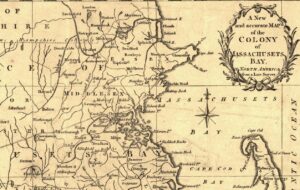 In the late 1600s, Britain and France both owned property in North America, and they were prone to periodic attacks on the colonies belonging to the other. On December 10, 1690, when the Massachusetts Bay Colony launched an ill-fated attack on Quebec, the result was a near-mutiny that forced the Massachusetts Bay Colony to issue the first paper currency in the history of the Western Hemisphere.
In the late 1600s, Britain and France both owned property in North America, and they were prone to periodic attacks on the colonies belonging to the other. On December 10, 1690, when the Massachusetts Bay Colony launched an ill-fated attack on Quebec, the result was a near-mutiny that forced the Massachusetts Bay Colony to issue the first paper currency in the history of the Western Hemisphere.
Sometimes, these “little skirmishes” put the governments in a position of a cash flow problem. They sometimes had to resort to IOUs to pay the men. In 1690, during one such war, Governor William Phips of Britain’s Massachusetts Bay Colony made a promise to his men that he could not keep. Phips was just back from a successful invasion of the French colony of Acadia. When it went so well, he decided to raid Quebec City. For their participation, Phips promised his volunteer troops half the loot. This loot was to be in addition to their usual pay. In those days, the soldiers were usually paid in coins, but sometimes shortages of official currency in the colonies forced armies to temporarily issue IOUs. Sometimes, even that was difficult, for lack of paper, so in one case, the men were actually paid with cut-up playing cards. The troops were then allowed to exchange the playing cards for goods and services until they received their actual pay.
As to Phips…he found himself with a rather large dilemma, because while he made a grand promise, the raid was a failure, when he didn’t manage to take the city. He was forced to return to Massachusetts with a damaged fleet and no treasure. With a shortage of coins and nothing else to pay the troops with, Phips faced a potential mutiny. So…out of options, on December 10th, 1690, the General Court of Massachusetts ordered the printing of a limited amount of government-backed, paper currency to pay the soldiers. It was the first such printing of paper money in North America. A few months later, with tax season approaching, a law was passed removing the limit on how much currency could be printed, calling for the immediate printing of more, and permitting the use of paper currency for the payment of taxes, which seems odd considering it had no value.
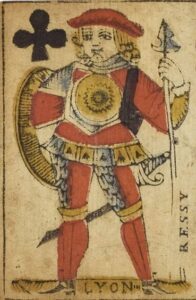
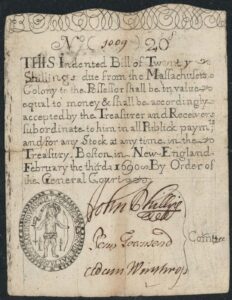 People didn’t trust the paper currency, making it unpopular for anything except paying taxes and before long, it was phased out. Nevertheless, within a few years, paper currency returned to Massachusetts. The Bank of England began issuing banknotes in 1695, also to pay for war against the French, and they became increasingly common throughout the 18th Century. Paper money has continued to cause controversy throughout the early history of the United States, and in many cases, remains so to this day. It was tied to the value of gold for a surprisingly long time, but in 1973 President Richard Nixon officially ended the international convertibility of the US dollar into gold. The printing of paper currency has always been a bit of a shady venture, because it is almost always done without the backing of gold. Without gold to back up the value of the paper currency, the economy is in danger.
People didn’t trust the paper currency, making it unpopular for anything except paying taxes and before long, it was phased out. Nevertheless, within a few years, paper currency returned to Massachusetts. The Bank of England began issuing banknotes in 1695, also to pay for war against the French, and they became increasingly common throughout the 18th Century. Paper money has continued to cause controversy throughout the early history of the United States, and in many cases, remains so to this day. It was tied to the value of gold for a surprisingly long time, but in 1973 President Richard Nixon officially ended the international convertibility of the US dollar into gold. The printing of paper currency has always been a bit of a shady venture, because it is almost always done without the backing of gold. Without gold to back up the value of the paper currency, the economy is in danger.
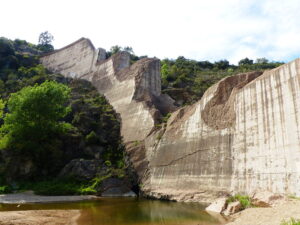
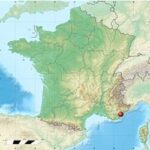 A strange thought, indeed, but Posthumous Marriage is not illegal in France…at least not since the Malpasset Dam disaster of December 2, 1959. While most of us would consider Posthumous Marriage to be a rather morbid idea, there are a couple of reasons that are considered legitimate reasons for the request for such a marriage to be granted. One such reason is, of course, a matter of deep emotional feelings for the lost fiancé. Another reason is to legitimize any children the couple already had, prior to the marriage…which I guess I can see, to a degree. There are rules that must be followed in order to have such a marriage approved…no matter what the reasons. The living partner must ask the deceased partner’s family for permission, and the invitations to the wedding must have already been sent out (showing intent from both members of the couple). The family can choose to allow, or not to allow the marriage, and if they do not agree, it is over. If family approval is given, the living partner must go before a judge to get legal permission to “marry” the deceased partner…who is usually represented at the service with a photograph. And…there are things that do not come with the marriage, such as any of the deceased partner’s property or money. In all reality, it is simply a symbolic event declaring their love for their partner. Nothing more!!
A strange thought, indeed, but Posthumous Marriage is not illegal in France…at least not since the Malpasset Dam disaster of December 2, 1959. While most of us would consider Posthumous Marriage to be a rather morbid idea, there are a couple of reasons that are considered legitimate reasons for the request for such a marriage to be granted. One such reason is, of course, a matter of deep emotional feelings for the lost fiancé. Another reason is to legitimize any children the couple already had, prior to the marriage…which I guess I can see, to a degree. There are rules that must be followed in order to have such a marriage approved…no matter what the reasons. The living partner must ask the deceased partner’s family for permission, and the invitations to the wedding must have already been sent out (showing intent from both members of the couple). The family can choose to allow, or not to allow the marriage, and if they do not agree, it is over. If family approval is given, the living partner must go before a judge to get legal permission to “marry” the deceased partner…who is usually represented at the service with a photograph. And…there are things that do not come with the marriage, such as any of the deceased partner’s property or money. In all reality, it is simply a symbolic event declaring their love for their partner. Nothing more!!
So how did such a strange idea get started in the first place. On December 2, 1959, the Malpasset Dam, an arch dam on the Reyran River, which is located approximately 4 miles north of Fréjus on the French Riviera (Côte d’Azur), Southern France, in the Var department collapsed, killing 423 people in the resulting flood. Signs of an imminent collapse began in November 1959, when a “trickle of clear water observed high on the right [side]” and then cracks noticed later in the month in the concrete apron at the dam toe. The dam was breached at 9:13pm on December 2, 1959. The break was partially due to rainfall and thus the rising level of water. By noon that day, the reservoir had reached its maximum level, and the guardian André Ferro asked for permission to release the excess water, but was denied the ability to do so until 6:00pm of that day. By then, the amount of water was so high that it took three hours to release only a few centimeters of water. The entire wall then collapsed leaving only a few blocks on the right bank. Pieces of the dam are still scattered throughout the area to this day. The damage amounted to an equivalent total of 68 million US dollars.
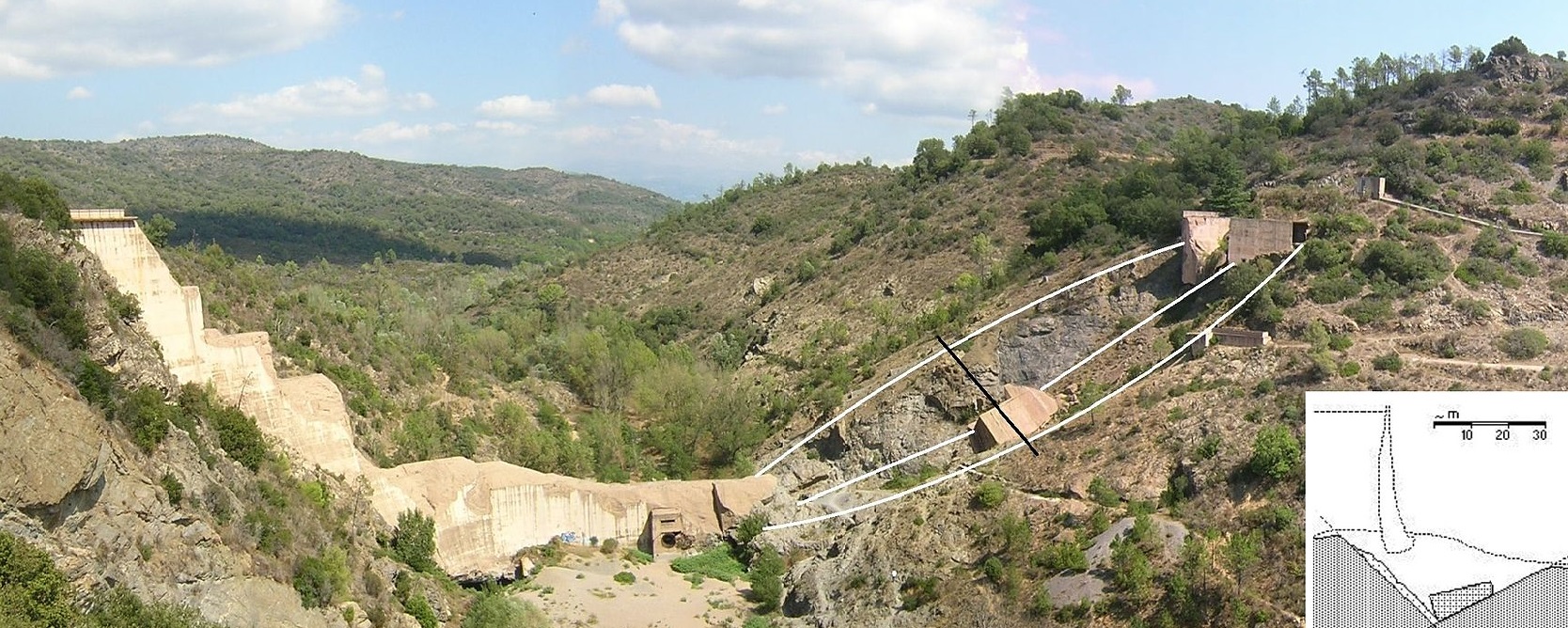
Apparently, there were so many women who lost their fiancés, that the event also ushered in the practice of posthumous marriage in France. It’s hard for me to imagine that out of 423 people, there were enough fiancés to warrant the need for a new law. I could assume that at least some of those couples were…dating yes, but not planning their weddings. Remember, that the invitations had to have been sent out, so there were a lot of couples in varying stages of wedding planning. Still, posthumous marriage is a very strange idea.
 On this day, August 21, 1911, an amateur painter decided to paint a painting near Leonardo da Vinci’s famed Mona Lisa, only to find out that someone had walked into the Louvre that morning, taken the priceless painting off the wall, hidden it under his clothing, and walked out of the museum. The first thought is, of course, who would be so brazen, but my second thought is how could he have pulled that off? How much clothing would it take to simply “tuck” a 20 inch by 30 inch painting into his clothing. Nevertheless, earlier that day, Vincenzo Perugia had walked into the Louvre, removed the famed painting from the wall, hid it beneath his clothes, and escaped.
On this day, August 21, 1911, an amateur painter decided to paint a painting near Leonardo da Vinci’s famed Mona Lisa, only to find out that someone had walked into the Louvre that morning, taken the priceless painting off the wall, hidden it under his clothing, and walked out of the museum. The first thought is, of course, who would be so brazen, but my second thought is how could he have pulled that off? How much clothing would it take to simply “tuck” a 20 inch by 30 inch painting into his clothing. Nevertheless, earlier that day, Vincenzo Perugia had walked into the Louvre, removed the famed painting from the wall, hid it beneath his clothes, and escaped.
The theft, somehow carried out in complete secrecy, left the entire nation of France is shock. There were many theories as to what could have happened to the priceless painting. Strangely, professional thieves were not on the list of suspects, because they would have realized that it would be too dangerous to try to sell the world’s most famous painting. I suppose that a private art collector might have hired a professional to steal it for a secret collection, but that didn’t seem to be the case. One theory, or  rumor really, in Paris was that the Germans had stolen it to humiliate the French. I’m not sure that made any sense before either of the world wars, but I guess tensions between the nations could have been on the rise then.
rumor really, in Paris was that the Germans had stolen it to humiliate the French. I’m not sure that made any sense before either of the world wars, but I guess tensions between the nations could have been on the rise then.
For two years, investigators and detectives searched for the painting without finding any real leads. Then in November 1913, the thief mad his first move…the one that would eventually bring his doom. Italian art dealer Alfredo Geri received a letter from a man calling himself Leonardo. It indicated that the Mona Lisa was in Florence and would be returned for a hefty ransom. Why he waited two years to ask for a ransom is beyond me, other than the fear of getting caught. The meet was set to pay the ransom, and when Perugia attempted to receive the ransom, he was captured. The painting was recovered, unharmed.
In a way, you could say that this was an inside job. Perugia knew his way around, and knew areas where the  Louvre might be vulnerable. Perugia, a former employee of the Louvre, claimed that he had acted out of a patriotic duty to avenge Italy on behalf of Napoleon. That claim was disproven when prior robbery convictions and Perugia’s diary, with a list of art collectors, caused most people to believe that he had acted solely out of greed. Perugia served seven months of a one-year sentence and later served in the Italian army during the First World War. The Mona Lisa is back in the Louvre, where improved security measures are now in place to protect it. I guess that one good thing came of the theft…better security. Of course, that might have come with technological advances anyway.
Louvre might be vulnerable. Perugia, a former employee of the Louvre, claimed that he had acted out of a patriotic duty to avenge Italy on behalf of Napoleon. That claim was disproven when prior robbery convictions and Perugia’s diary, with a list of art collectors, caused most people to believe that he had acted solely out of greed. Perugia served seven months of a one-year sentence and later served in the Italian army during the First World War. The Mona Lisa is back in the Louvre, where improved security measures are now in place to protect it. I guess that one good thing came of the theft…better security. Of course, that might have come with technological advances anyway.

